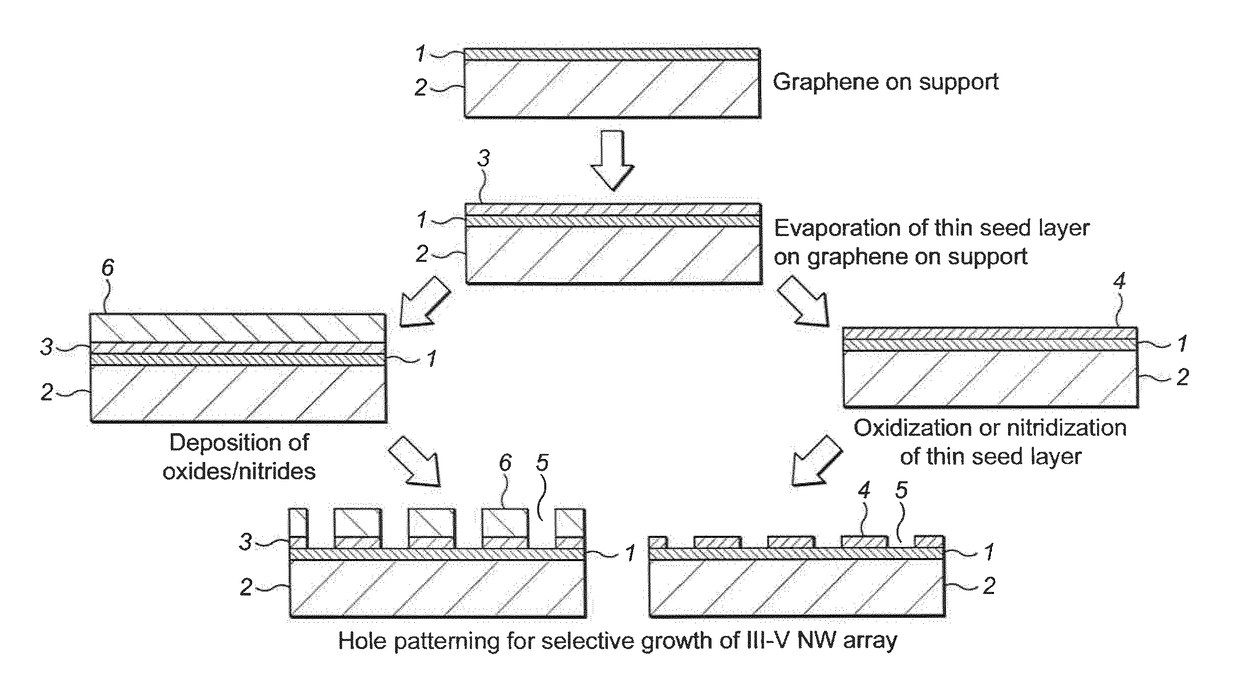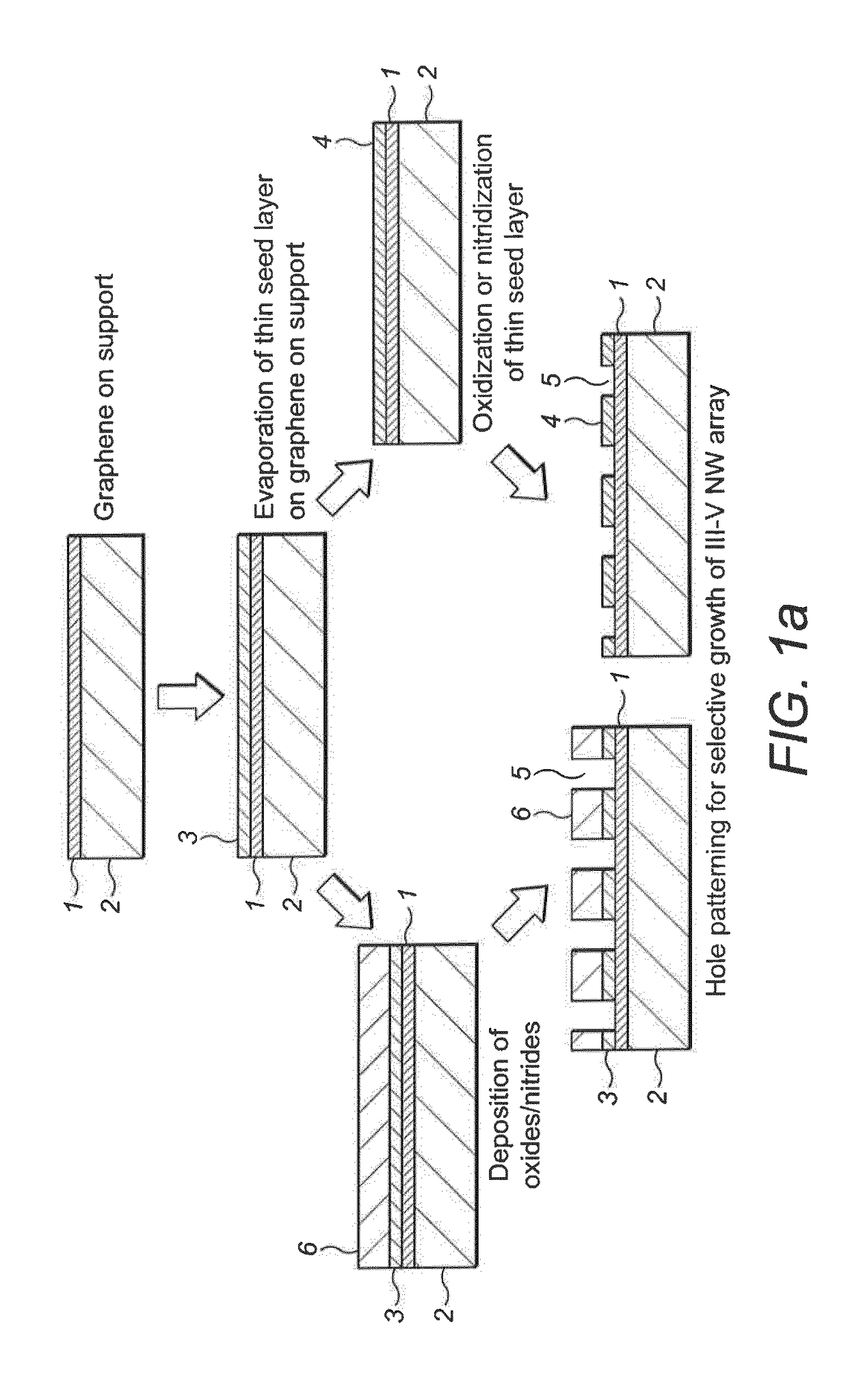Nanowires or nanopyramids grown on graphitic substrate
a graphitic substrate and nanowire technology, applied in the direction of sustainable manufacturing/processing, climate sustainability, semiconductor devices, etc., can solve the problems of difficult deposition of conventional silica or silicon nitride masks on graphitic substrates, and the deposition method is not readily applicable to graphitic substrates
- Summary
- Abstract
- Description
- Claims
- Application Information
AI Technical Summary
Benefits of technology
Problems solved by technology
Method used
Image
Examples
first embodiment
[0085]In the first embodiment, the seed layer is exposed to oxygen or nitrogen to cause oxidation or or nitridization of the seed layer to the corresponding oxide or nitride. The oxygen / nitrogen can be supplied as pure gas but more conveniently, it is simply supplied in air. The temperature and pressure of the oxidation process can be controlled to ensure that the seed layer oxidises / nitridizes but not the graphitic layer. Oxygen / nitrogen plasma treatment can be also applied. Preferred oxides are silicon dioxide, titanium dioxide or aluminium oxide.
second embodiment
[0086]In the second embodiment an oxide or nitride masking layer, preferably a metal oxide or metal nitride layer or semimetal oxide or semimetal nitride) is deposited on top of the seed layer. This can be achieved through atomic layer deposition or the techniques discussed above in connection with the deposition of the seed layer. The oxide used is preferably based on a metal or semimetal (such as Si). The nature of the cation used in the masking layer may be selected from the same options as the seed layer i.e. Al, Si or a transition metal, especially a first 3d row transition metal (Sc—Zn). The masking layer can therefore be formed from an oxide or a nitride of the seed layer element It is preferred if the metal atom of the seed layer (adjacent the masking layer) is the same as the cation of the masking layer. The masking layer should, however, be formed of a different material to the seed layer.
[0087]Preferred masking layers are based on oxides, such as SiO2, Si3N4, TiO2 or Al2O...
third embodiment
[0158]In a third embodiment, the problem of doping in an Al containing nanowire or nanopyramid is addressed using a tunnel junction. A tunnel junction is a barrier, such as a thin layer, between two electrically conducting materials. In the context of the present invention, the barrier functions as an ohmic electrical contact in the middle of a semiconductor device.
[0159]In one method, a thin electron blocking layer is inserted immediately after the active region, which is followed by a p-type doped AlGaN cladding layer with Al content higher than the Al content used in the active layers. The p-type doped cladding layer is followed by a highly p-type doped cladding layer and a very thin tunnel junction layer followed by an n-type doped AlGaN layer. The tunnel junction layer is chosen such that the electrons tunnel from the valence band in p-AlGaN to the conduction band in the n-AlGaN, creating holes that are injected into the p-AlGaN layer.
[0160]More generally, it is preferred if th...
PUM
| Property | Measurement | Unit |
|---|---|---|
| thickness | aaaaa | aaaaa |
| thickness | aaaaa | aaaaa |
| length | aaaaa | aaaaa |
Abstract
Description
Claims
Application Information
 Login to View More
Login to View More - R&D
- Intellectual Property
- Life Sciences
- Materials
- Tech Scout
- Unparalleled Data Quality
- Higher Quality Content
- 60% Fewer Hallucinations
Browse by: Latest US Patents, China's latest patents, Technical Efficacy Thesaurus, Application Domain, Technology Topic, Popular Technical Reports.
© 2025 PatSnap. All rights reserved.Legal|Privacy policy|Modern Slavery Act Transparency Statement|Sitemap|About US| Contact US: help@patsnap.com



